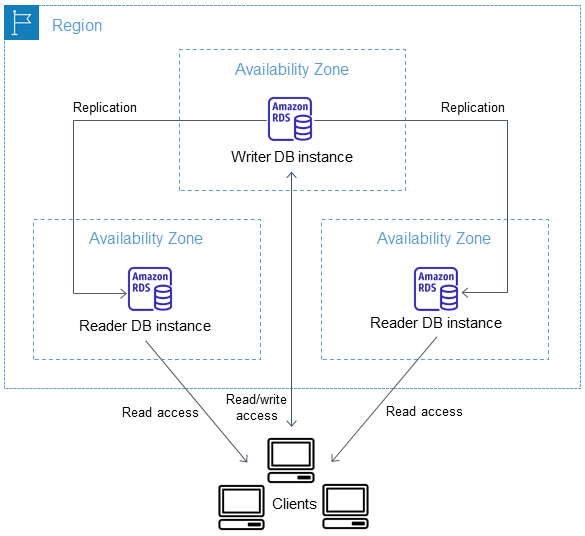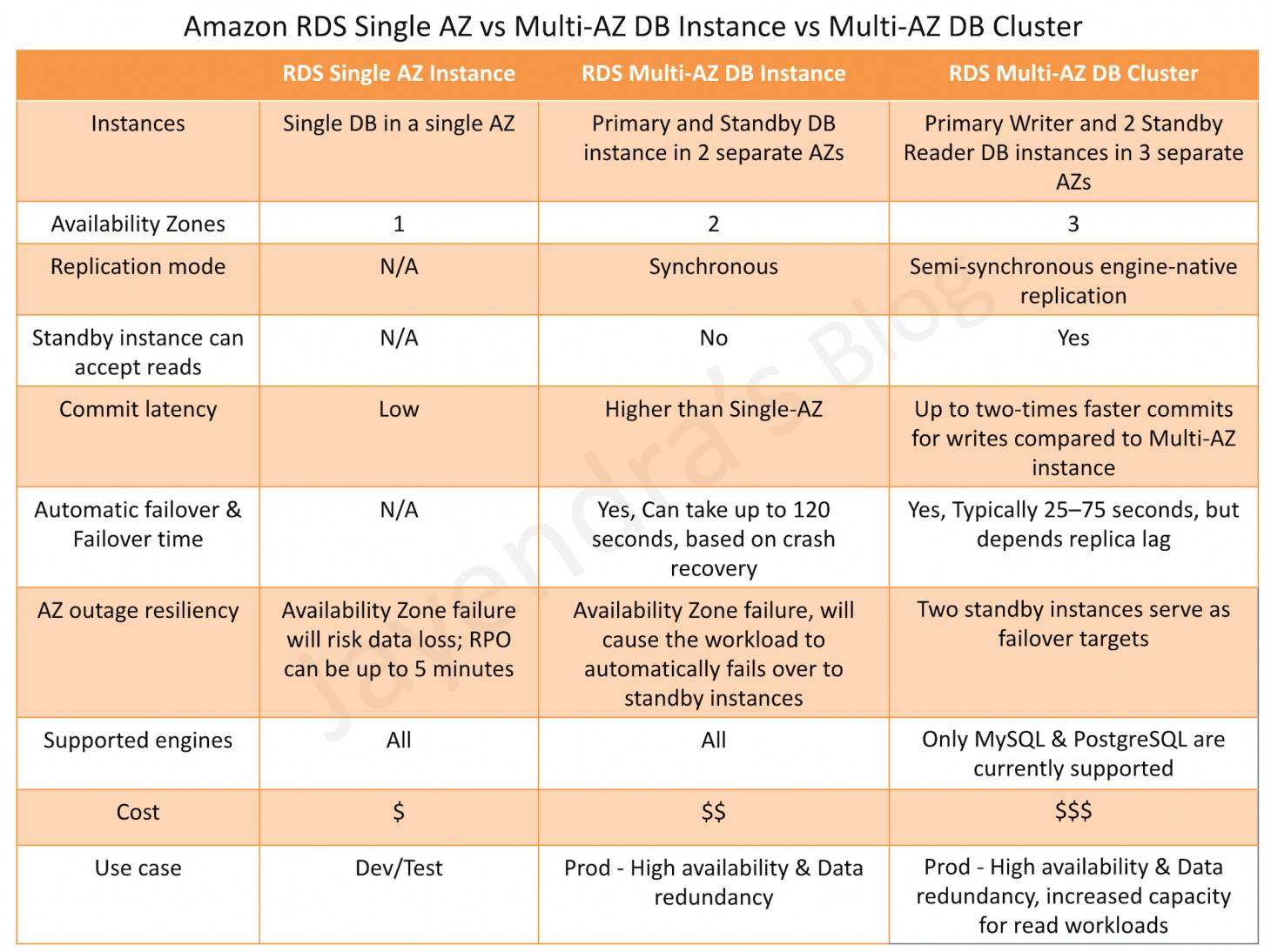RDS Multi-AZ DB Cluster
- RDS Multi-AZ DB cluster deployment is a high-availability deployment mode of RDS with two readable standby DB instances.
- RDS Multi-AZ DB cluster has a writer DB instance and two reader DB instances in three separate AZs in the same AWS Region.
- Multi-AZ DB clusters provide high availability, increased capacity for read workloads, and lower write latency when compared to Multi-AZ DB instance deployments.
- Multi-AZ DB clusters aren’t the same as Aurora DB clusters.

- With a Multi-AZ DB cluster, RDS replicates data from the writer DB instance to both of the reader DB instances using the DB engine’s native replication capabilities.
- When a change is made on the writer DB instance, it’s sent to each reader DB instance. Acknowledgment from at least one reader DB instance is required for a change to be committed.
- Reader DB instances act as automatic failover targets and also serve read traffic to increase application read throughput.
- If an outage occurs on the writer DB instance, RDS manages failover to one of the reader DB instances. RDS does this based on which reader DB instance has the most recent change record.
- Multi-AZ DB clusters typically have lower write latency when compared to Multi-AZ DB instance deployments.
- They also allow read-only workloads to run on reader DB instances.
- Supports two endpoints
- Cluster or Writer endpoint connects to the writer DB instance of the DB cluster, which supports both read and write operations.
- Reader endpoint connects to either of the two reader DB instances, which support only read operations.
- Instance endpoint connects to a specific DB instance within a Multi-AZ DB cluster.
Multi-AZ DB Cluster Limitations
- Multi-AZ DB clusters are supported only for the MySQL and PostgreSQL DB engines.
- Multi-AZ DB clusters support only Provisioned IOPS storage.
- Single-AZ DB instance deployment or Multi-AZ DB instance deployment can’t be upgraded into a Multi-AZ DB cluster.
- Multi-AZ DB clusters don’t support modifications at the DB instance level because all modifications are done at the DB cluster level.
- Multi-AZ DB clusters don’t support the following features:
- Support for IPv6 connections (dual-stack mode)
- Cross-Region automated backups
- Exporting Multi-AZ DB cluster snapshot data to an Amazon S3 bucket
- IAM DB authentication
- Kerberos authentication
- Modifying the port
- Option groups
- Point-in-time-recovery (PITR) for deleted clusters
- Restoring a Multi-AZ DB cluster snapshot from an Amazon S3 bucket
- Storage autoscaling by setting the maximum allocated storage. Manually scale the storage.
- Stopping and starting the DB cluster
- Copying a snapshot of a Multi-AZ DB cluster
- Encrypting an unencrypted Multi-AZ DB cluster
RDS Multi-AZ DB Cluster Failover
- RDS automatically fails over to a reader DB instance in a different AZ in case of a planned or unplanned outage of the writer DB instance, as quickly as possible without administrative intervention
- Failover time taken depends on the database activity and other conditions when the writer DB instance becomes unavailable and is typically under 35 seconds.
- Failover completes when both reader DB instances have applied outstanding transactions from the failed writer.
Multi-AZ DB Instance vs Multi-AZ DB Cluster

AWS Certification Exam Practice Questions
- Questions are collected from Internet and the answers are marked as per my knowledge and understanding (which might differ with yours).
- AWS services are updated everyday and both the answers and questions might be outdated soon, so research accordingly.
- AWS exam questions are not updated to keep up the pace with AWS updates, so even if the underlying feature has changed the question might not be updated
- Open to further feedback, discussion and correction.
References
RDS_Multi-AZ_Cluster_Deployment



One thought on “AWS RDS Multi-AZ DB Cluster”
Comments are closed.